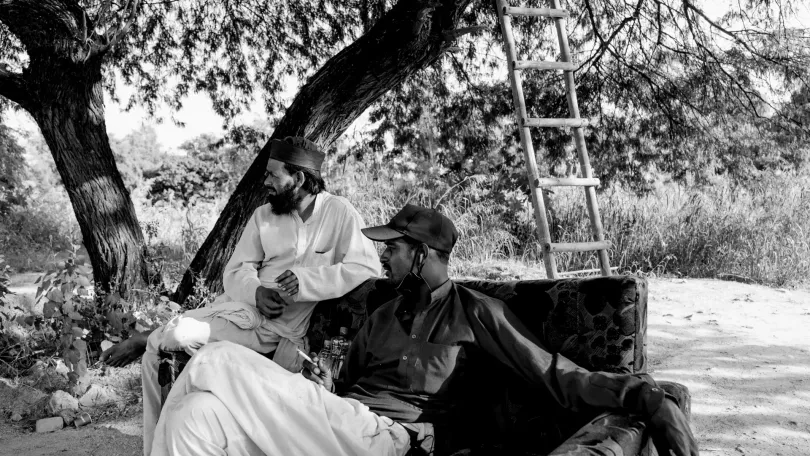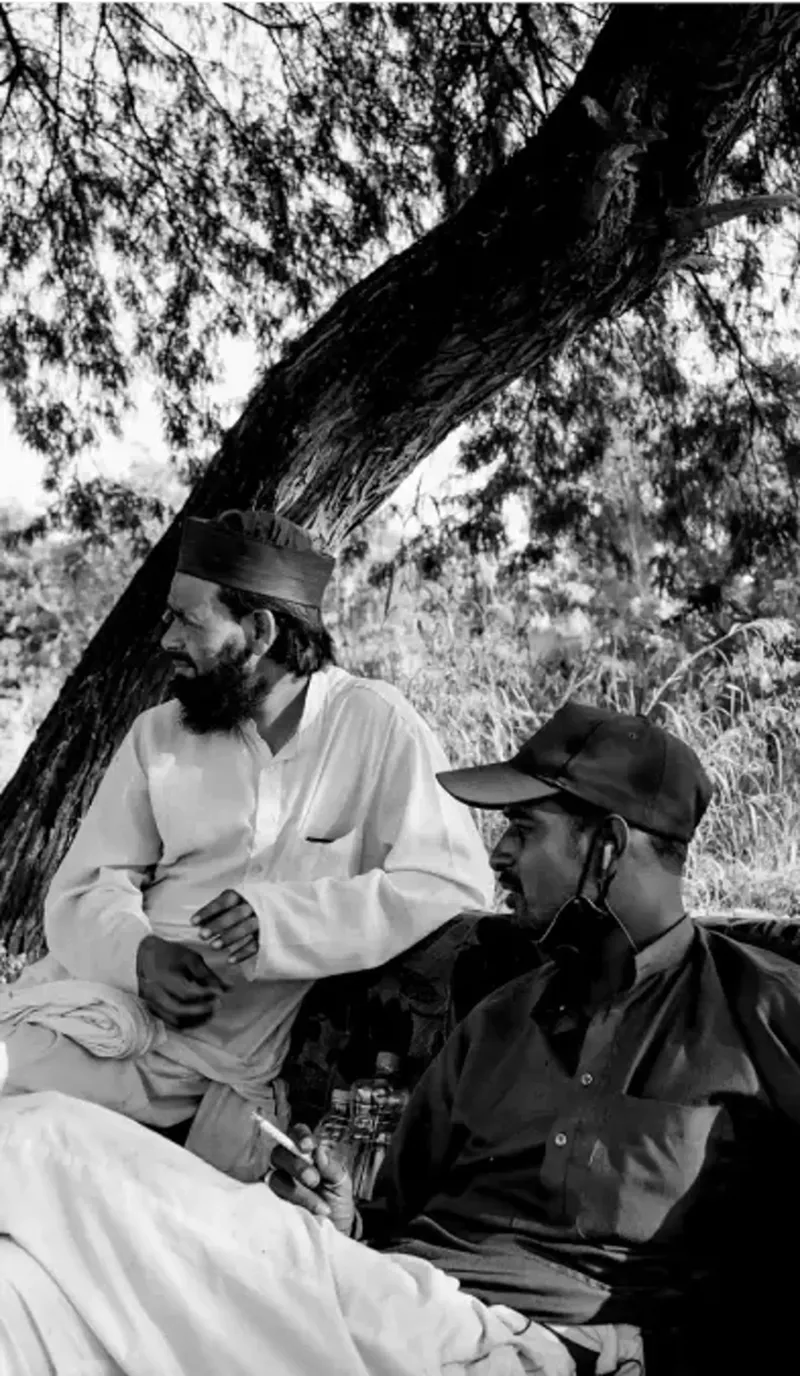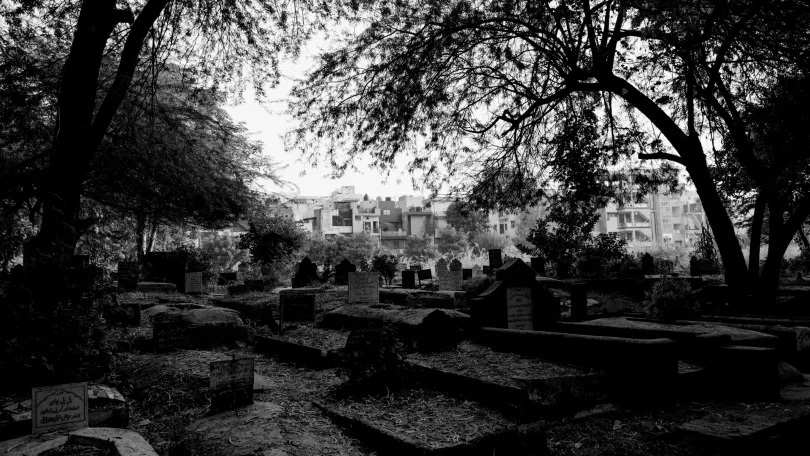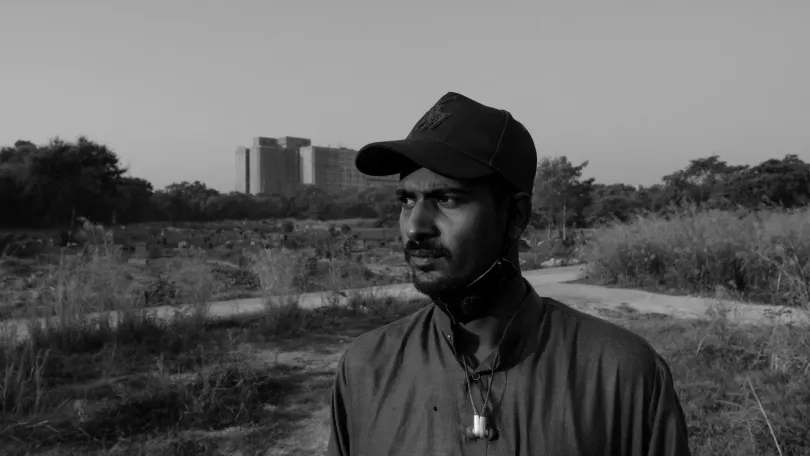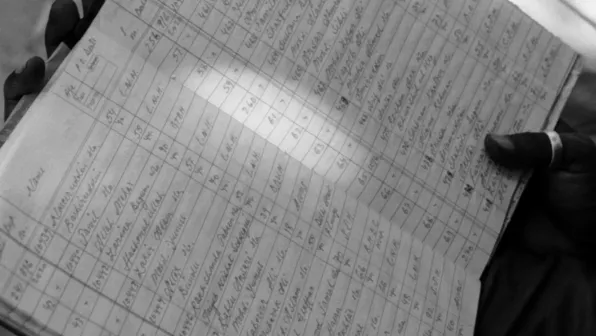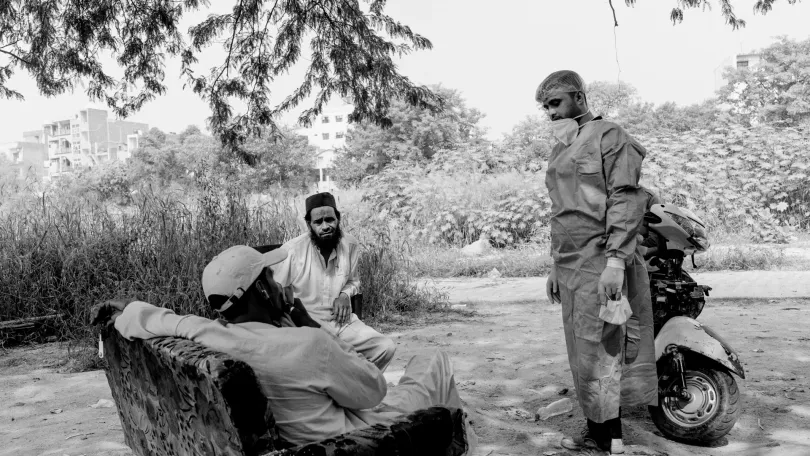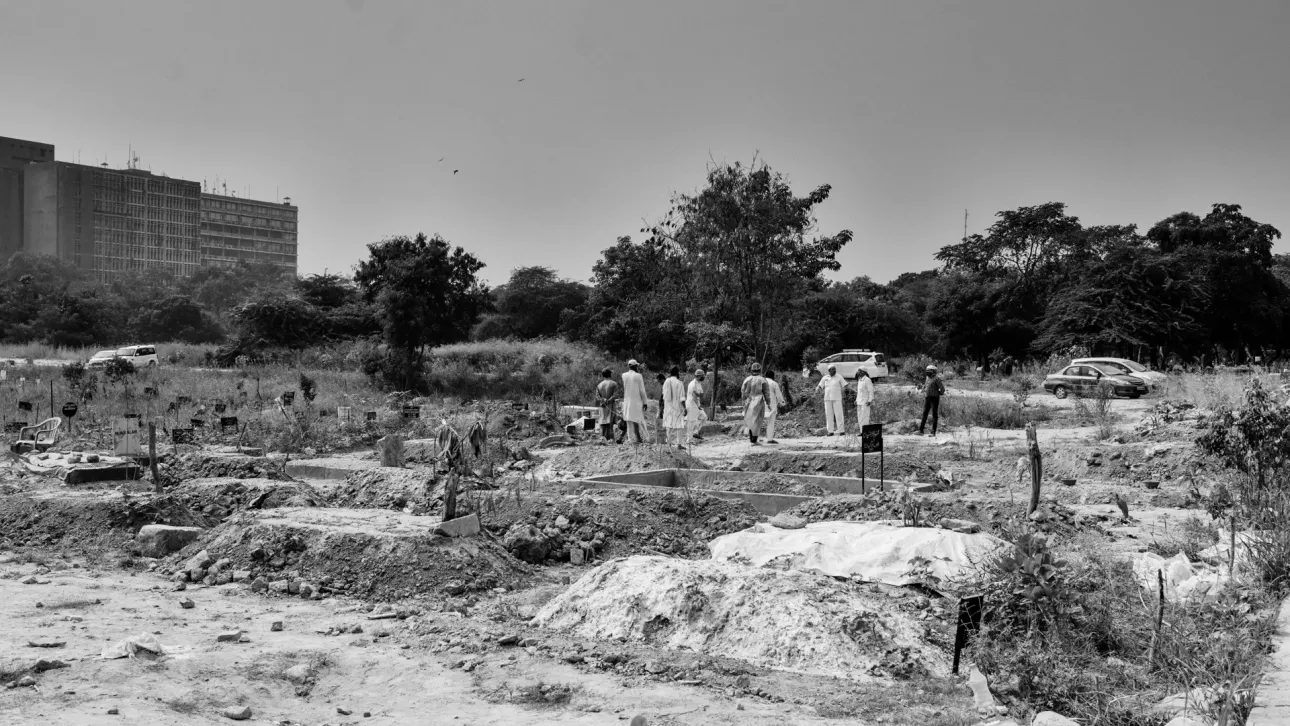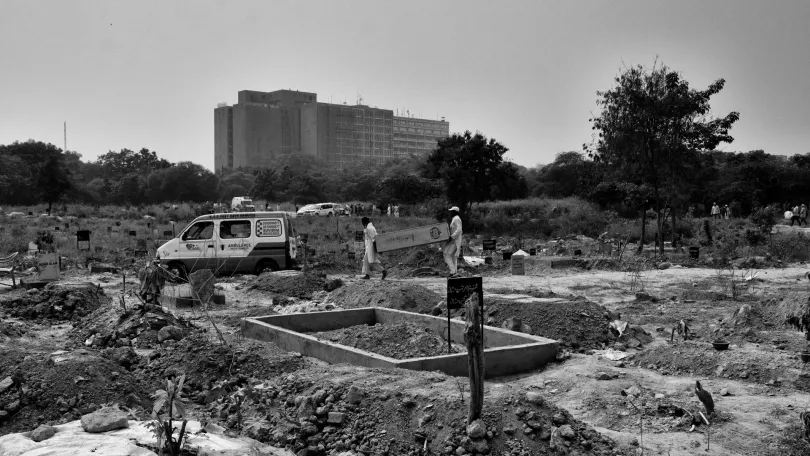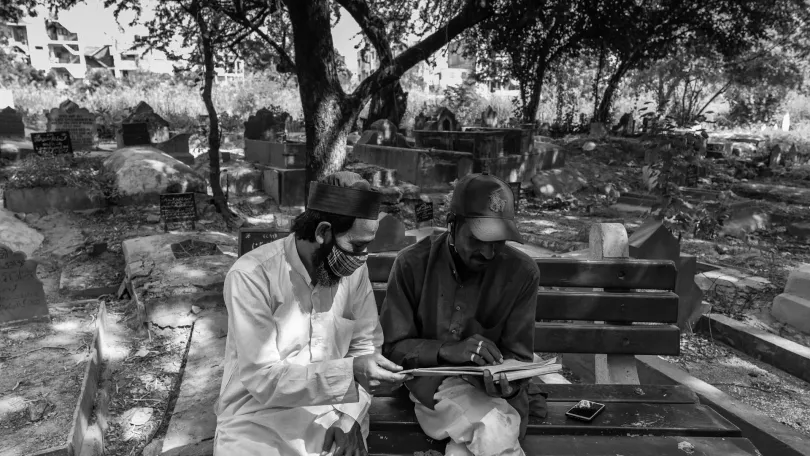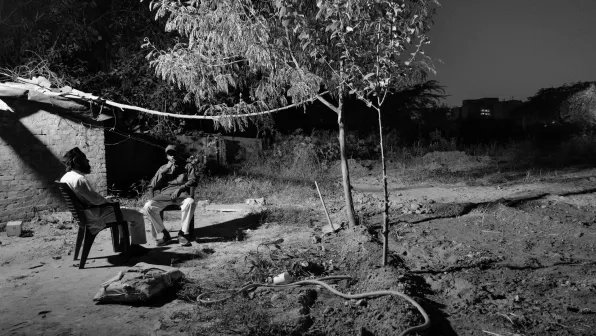Caretakers at New Delhi’s oldest graveyard, Shamim and Wasim, sit on an old discarded sofa at the edge of a Covid-19 burial site. By early October 2020, they’d buried more than 620 pandemic victims on their own.
Beyond the “regular death” section of New Delhi’s oldest graveyard lies the Covid-19 burial site. In contrast to the paved and shaded old section, the pandemic graveyard is roughly dug, dusty, and mostly unkept.
Shamim’s father and his father’s father were both caretakers of this cemetery. He says neither of them witnessed the enormity of death and grief that he’s experienced during the Covid-19 pandemic in India.
Each Covid-19 burial is hand-written in a register. The cemetery has kept a separate log for victims since the start of the pandemic in India.
(L to R) Shamim, Wasmin and ambulance driver, Ansar, discuss the daily death toll after Ansar delivers another Covid-19 body to the cemetery for burial.
Beyond the dirt mounds which represent freshly-filled graves, family and friends bury another Covid-19 victim at New Delhi’s oldest cemetery.
Shamim and Wasim carry a plywood coffin to an ambulance transporting a Covid-19 victim. As deaths increased, so too did the number of stark and simple coffins they ordered and kept on site to meet demand.
(L to R) Wasim and Shamim review the cemetery’s Covid-19 burial register.
(L to R) As night falls, Wasim and Shamim sit outside a flimsy brick hut they built for themselves on the fringes of the Covid-19 burial site in the summer of 2020. They look out at the rows upon rows of graves, recalling most of the victim’s names and stories.


